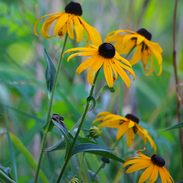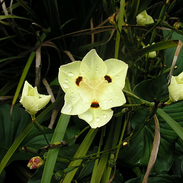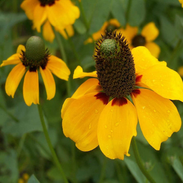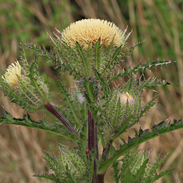The Clasping-Leaved Coneflower (Dracopis amplexicaulis), with its vibrant yellow rays and distinctive cone-shaped center, is a cheerful wildflower native to the central United States. Often found gracing prairies and meadows, this plant has a rich history of medicinal use, particularly among Native American tribes. Let's explore the healing potential of this often-overlooked prairie treasure.
Traditional Uses:
While documented traditional uses of Clasping-Leaved Coneflower are limited, some sources suggest its historical application by Native American tribes for:
Pain Relief: The plant may have been used to alleviate various types of pain, including headaches, toothaches, and stomach aches.
Respiratory Ailments: It may have been used to address coughs, colds, and sore throats.
Skin Conditions: Some traditional uses may have involved treating skin irritations and wounds.
Potential Properties & Modern Research:
Scientific research on Clasping-Leaved Coneflower is still in its early stages, but some intriguing findings have emerged:
Anti-inflammatory Activity: Studies have identified compounds in Clasping-Leaved Coneflower with anti-inflammatory properties, which could explain its traditional use for pain relief and skin conditions.
Antioxidant Potential: Like many plants, it likely contains antioxidants, which can help protect cells from damage and contribute to overall health.
Antimicrobial Properties: While not extensively studied, it's possible that Clasping-Leaved Coneflower possesses antimicrobial activity, supporting its potential use for skin infections and other ailments.
Cautions and Considerations:
Limited Research: It's crucial to remember that research on Clasping-Leaved Coneflower is still limited, and its safety and efficacy haven't been fully established.
Allergies: As with any plant, some individuals may be allergic to Clasping-Leaved Coneflower.
Pregnancy and Breastfeeding: Pregnant and breastfeeding women should avoid using it due to a lack of safety data.
Sustainable Harvesting: If you plan to wildcraft Clasping-Leaved Coneflower, ensure you do so sustainably and with respect for the environment.
The Future of Clasping-Leaved Coneflower:
With its potential anti-inflammatory, antioxidant, and antimicrobial properties, Clasping-Leaved Coneflower holds promise for future research. Further scientific investigation is needed to fully understand its therapeutic potential, identify active compounds, and develop safe and effective applications.
Disclaimer: This blog post is for informational purposes only and should not be considered medical advice. Always consult with a qualified healthcare professional before using any herbal remedies.













